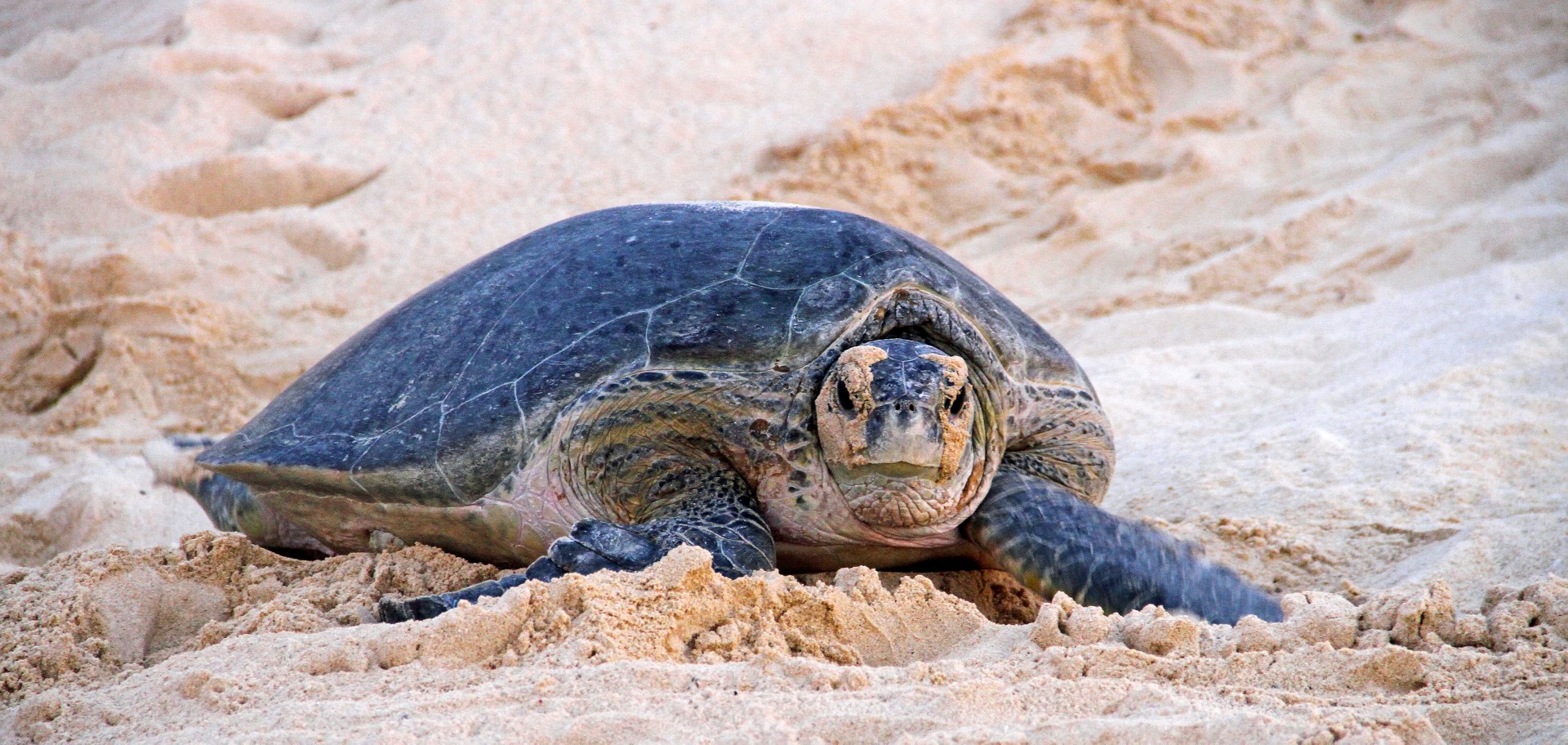Sometimes it’s good to just slow everything down a bit on holidays, but to really engage with sea turtles on your next getaway, slow is the only way to go!
Life on Satang Besar Island moves at such a slow pace that any progress is measured by the speed of turtles. Renowned – at least by some – for their general state of sluggishness, these reasonably remote islands just off the Sarawak coastline in East Malaysia really are a haven for the select few who want to move into the slow lane and get close to the sea turtles that visit the island to lay their eggs in the soft sand.
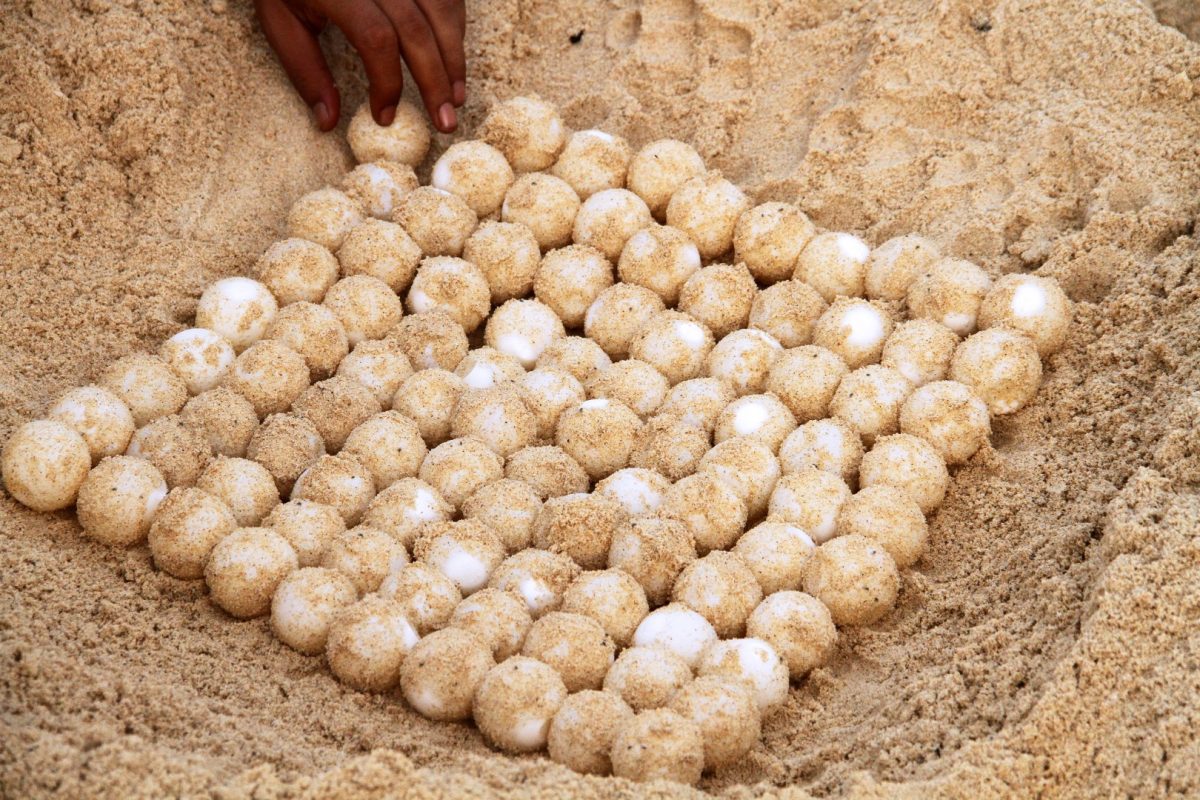
These days, ecotourism – short for ecological tourism – is a travel buzzword which refers to travel to mostly untouched natural locations to admire natural features. Some operators and destinations take a Disneyland approach to ecotourism, while others such as the turtle programme at Taman Negara Talang Satang (Talang Satang National Park) place the location’s natural features – in this case, the turtles – above anything else. Visitors get second billing, but the limited numbers of adventurers that visit here are not complaining, as everyone gets a front row view of the turtles.
ISLAND REFUGE
Talang Satang is one of many national parks and reserves in Sarawak, but this is the first and one of the few marine parks. Sarawak is renowned for its many land-based natural attractions and parks, but not as well-known for its coastline, islands, and marine settings. Usually it’s neighbouring Sabah that gets the attention for that.
Talang and Satang are two of the islands in this small island group that the turtles visit and, the surrounding waters of the South China Sea are where the turtles breed and feed. Endangered green and hawksbill turtles lay eggs in this remote and peaceful island just off the Sarawak coastline. As a protected area, the islands provide a habitat and play an important role in the turtle’s reproductive cycle. As such, visitor facilities, development, and ranger headquarters are limited and restricted to the largest island in the group.
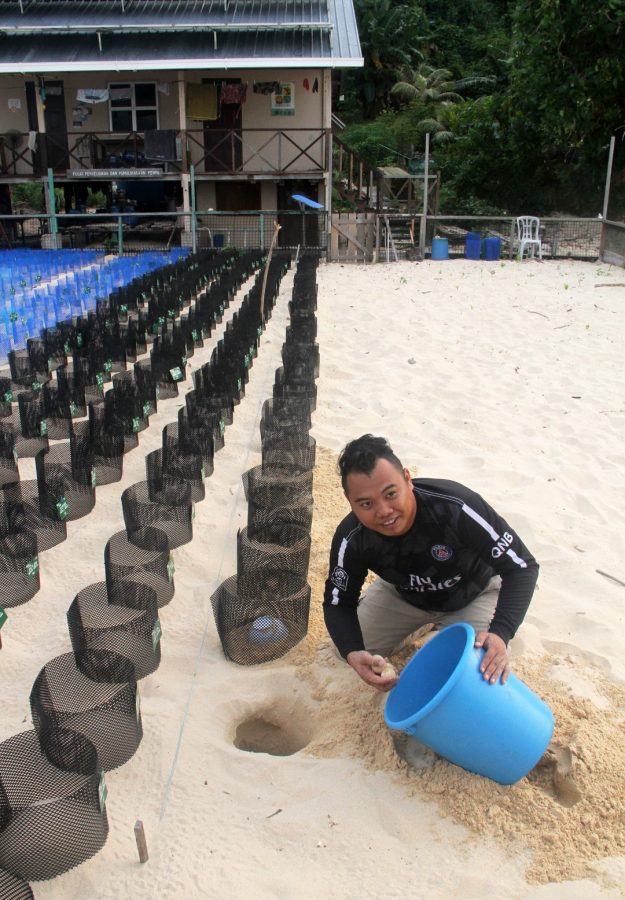
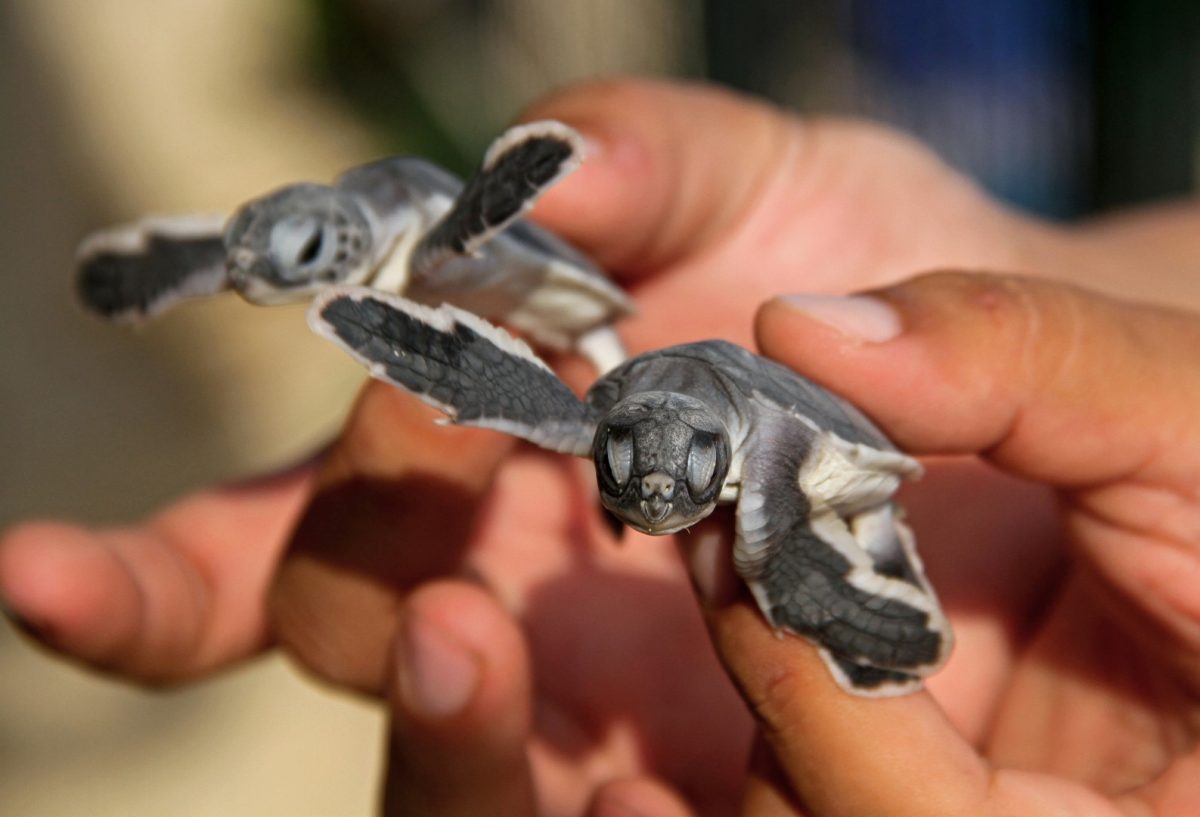
COASTAL ADVENTURES
Our small group of adventurers headed off with our tour guide from Kuching to the fishing village of Sematan in the far west of coastal Sarawak. Our visit also included a night at Tanjung Datu near the border with Indonesia, but looking at a map later, I realised there are small coastal villages that are closer to Kuching should visitors just want to visit Taman Negara Talang Satang. Visits to the turtle island must be done with a travel operator approved by Sarawak Tourism, and advance bookings are essential.
We pulled into the shallows of the marine park and unloaded the small boat before the boatman returned to the mainland. The remainder of the day was spent relaxing, eating, enjoying a cold beer (our guide had thoughtfully brought a container of ice to keep them chilled), reading, swimming, sleeping, and inspecting the turtle hatchery.
One of the most appealing qualities of the national park is that limited accommodation enables just a handful to visit at any one time. Facilities on the island are limited, but certainly comfortable enough, and our guide cooked some amazing meals with ingredients all transported from the mainland.
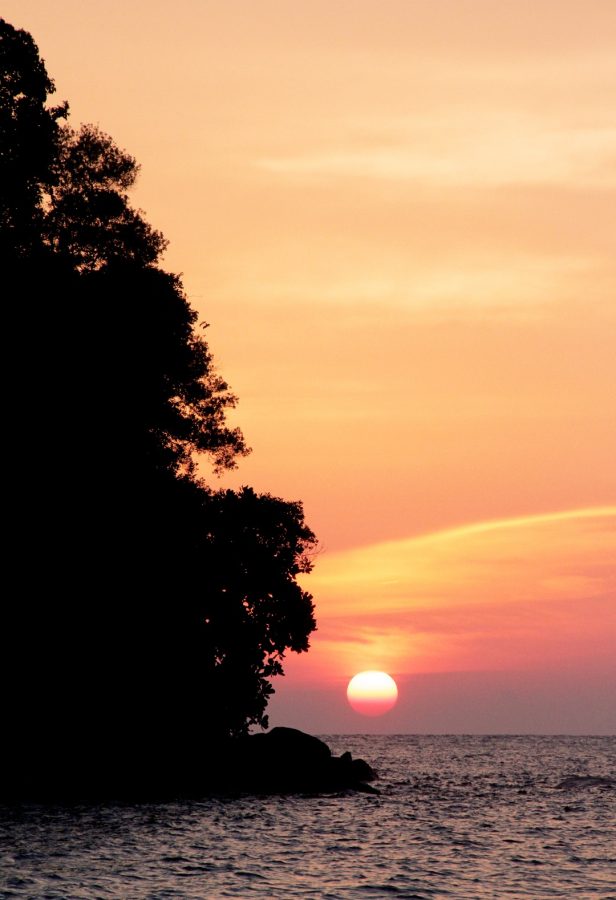
TURTLE TIME
At first sighting, it is difficult to determine the purpose of all the small circular nets in the sands of the hatchery, but this is where the eggs incubate for 50 days, safely protected from predators. As rangers place new eggs in their protected home, older clutches are hatching elsewhere in the hatchery. Floundering around in the heat of the day, the bright light, soft sand, and wire entrapment, the baby turtles offered some hope for their future survival. When the time is right, rangers scoop the hatchlings into a bucket for their evening release to the sea.
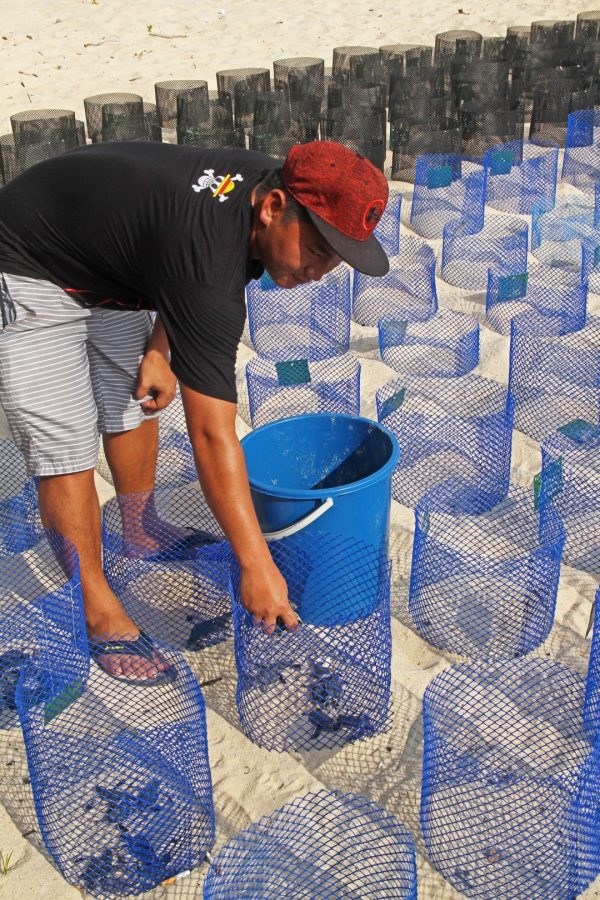
Just after the sun sets, the waiting game was over, and a ranger led us off to observe one of the first turtles to land. Two species visit the island – green and hawksbill turtles – and their size comes as the first surprise as they lumber up onto the sand to find a place to start digging. The ranger passed on snippets of information including the fact that adult sea turtles can grow up to a metre in length and weigh 40 to 80 kilograms.
Visitors to the marine park need to appreciate that the park’s primary purpose is to conserve the turtles. Therefore, the management of both tourists and turtles is very important. Torches are not permitted in the evenings, as they can disturb the turtles during their laborious task. One of the rangers has a torch mostly for safety reasons and its dim beam provides sufficient light for observation. The egg-laying process takes several hours overall, but we spent just about an hour or so observing a turtle dig a hole and then lay her eggs. Each turtle deposits about 100 eggs in the hole, and then slowly crawls back to the sea to recover.
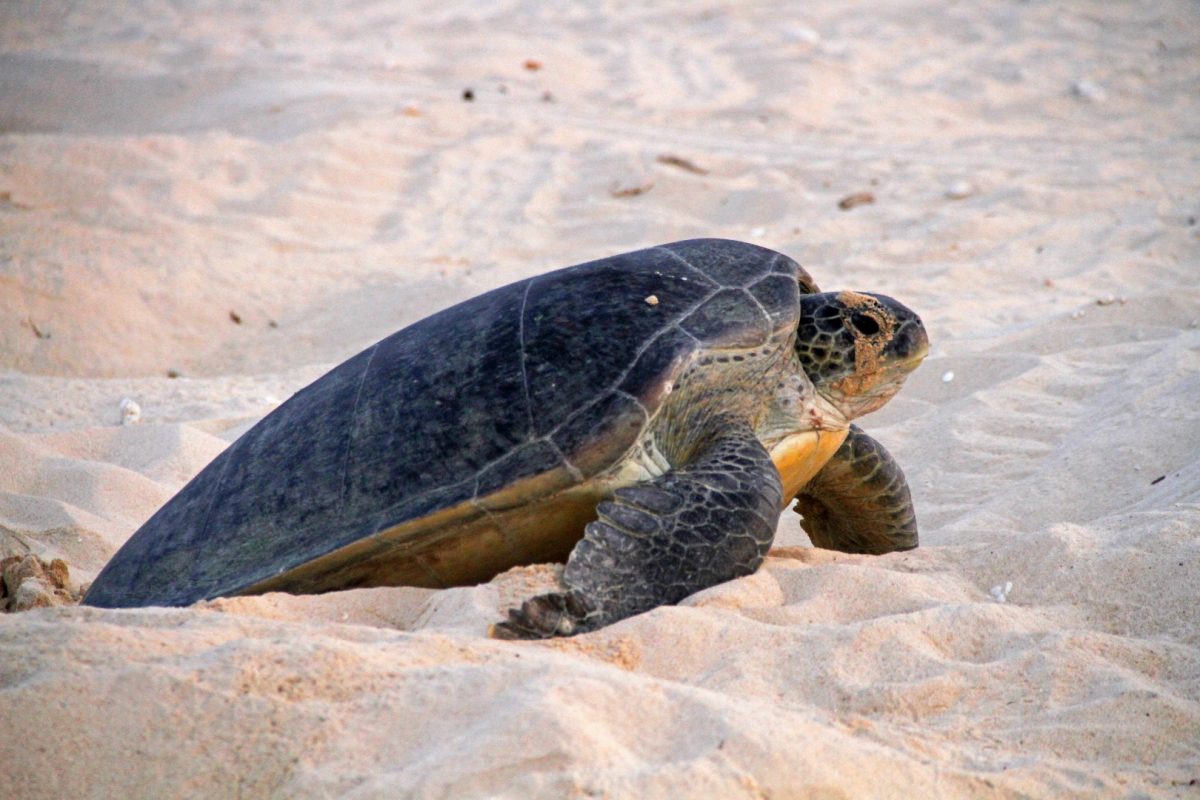
Park rangers make scientific measurements of each animal to monitor the success of their programme. For our experience, after the turtle retreated to the sea, the rangers quickly unearthed the eggs and relocated them to the enclosed hatchery. Here, the eggs are protected from predators – especially monitor lizards.
Perhaps the highlight of the night was when we were given the opportunity to release a new batch of young hatchlings into the sea. In nature, the hatchlings make their way to the surface of the sand and then scurry off into their new watery home. Human intervention through the hatchery programme enabled our small group to release 50 or so baby turtles to the South China Sea and to make a humble contribution to their survival chances. At daybreak, the beach looked like a four-wheel drive vehicle had done wheelies on the soft sand, as numerous turtle tracks trailed into the sea suggesting a dozen or so turtles had landed overnight.
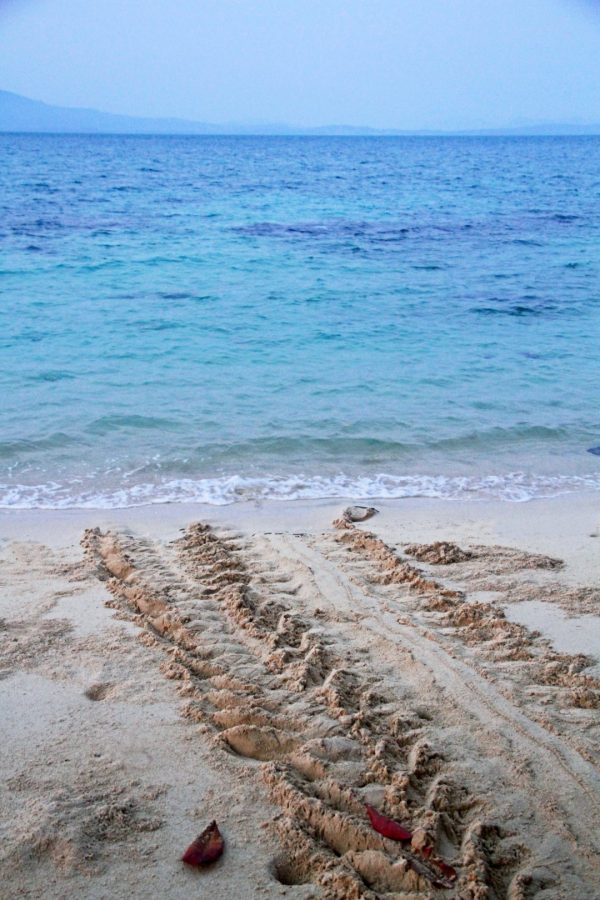
I felt very privileged to be on the island with just a few friends, our guide, and four rangers, as it meant that I had the opportunity to be standing in the shallows as the sun rose with several turtle stragglers still on the beach. My fellow travellers were still in bed at that hour, so along with my camera, it was just the turtles and me.
Most visitors spend just two days and one night here, but the memory will doubtlessly remain with them for a lifetime. It’s a remarkable experience and one for which the park should be praised: Protection and sustainable ecotourism practices ensure that that the turtles are observed and protected, but not disturbed.
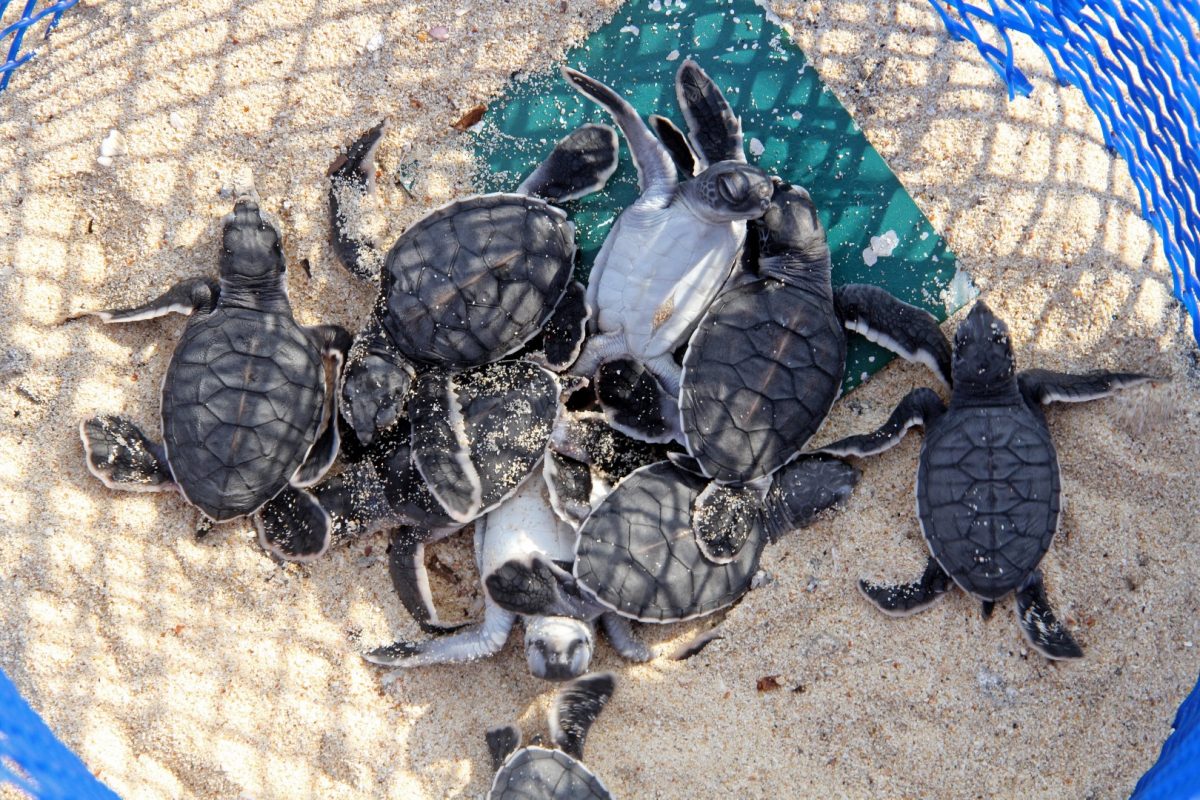
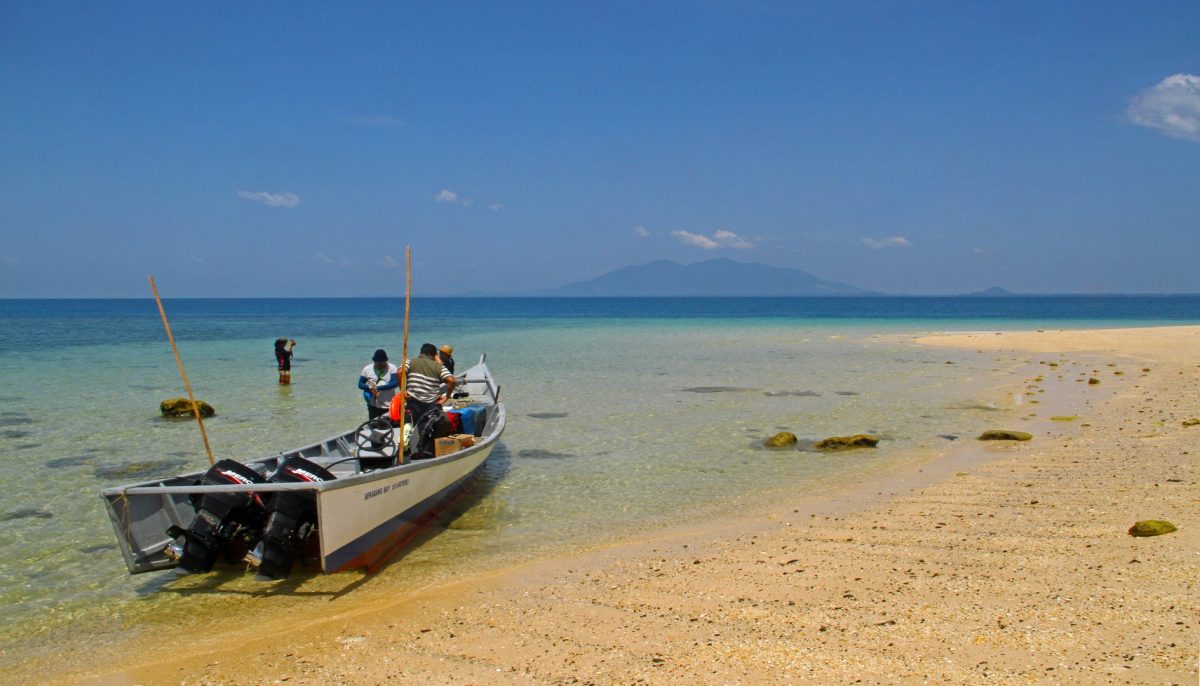
TRAVEL FILE
Getting There: Fly from Kuala Lumpur to Kuching and from Kuching’s airport, the combined road and boat journey takes about three hours.
What to Take: Swimmers, sunscreen, hat, joggers, snacks, and a good book. Flash photography is not permitted, but get up early as stragglers are commonly seen at daybreak (the sun rises in Sarawak about 6am).
Best Times to Visit: The turtles visit the islands between May to October, so either go soon, or start planning to visit during this window of opportunity next year.
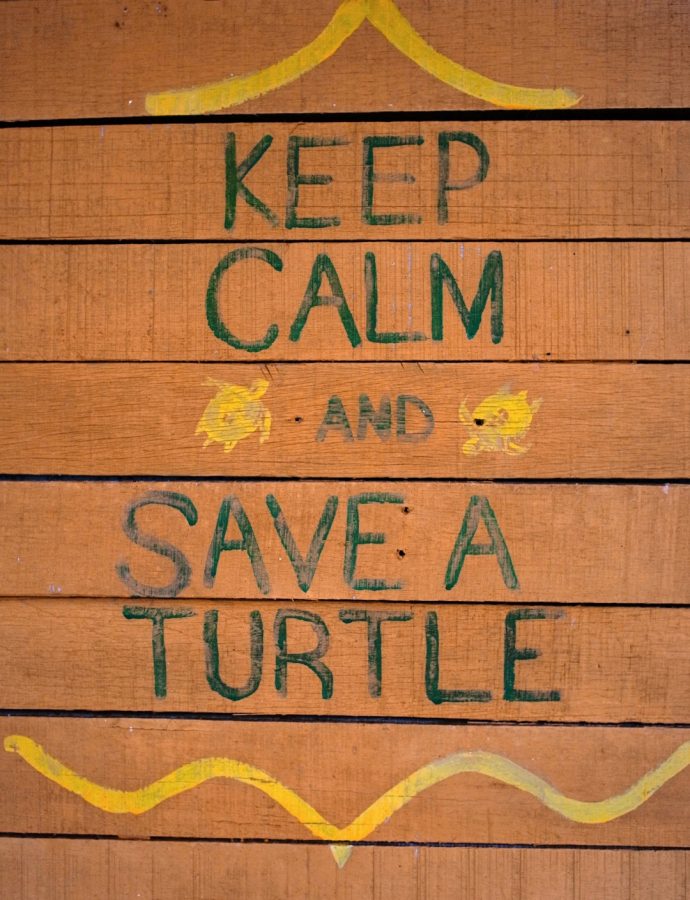
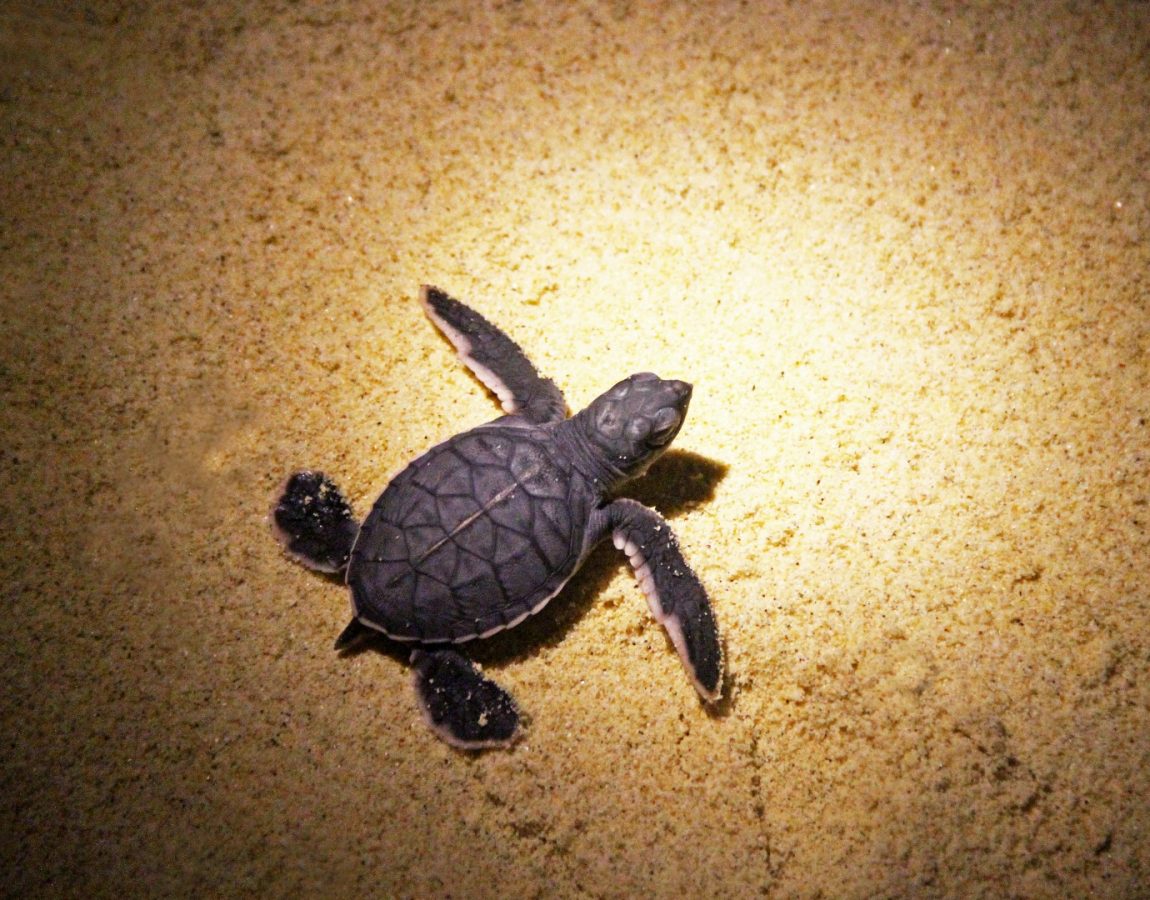
"ExpatGo welcomes and encourages comments, input, and divergent opinions. However, we kindly request that you use suitable language in your comments, and refrain from any sort of personal attack, hate speech, or disparaging rhetoric. Comments not in line with this are subject to removal from the site. "


